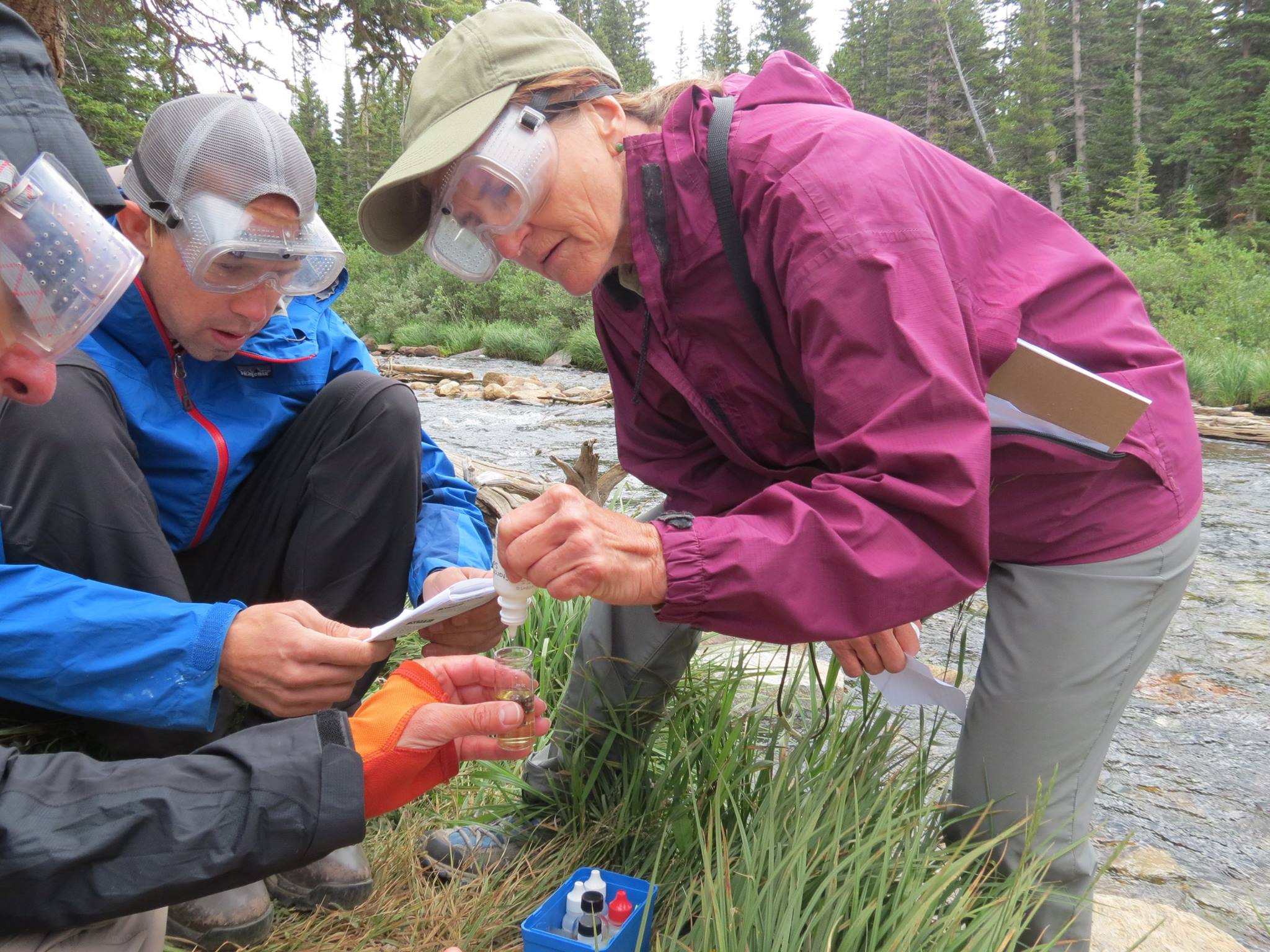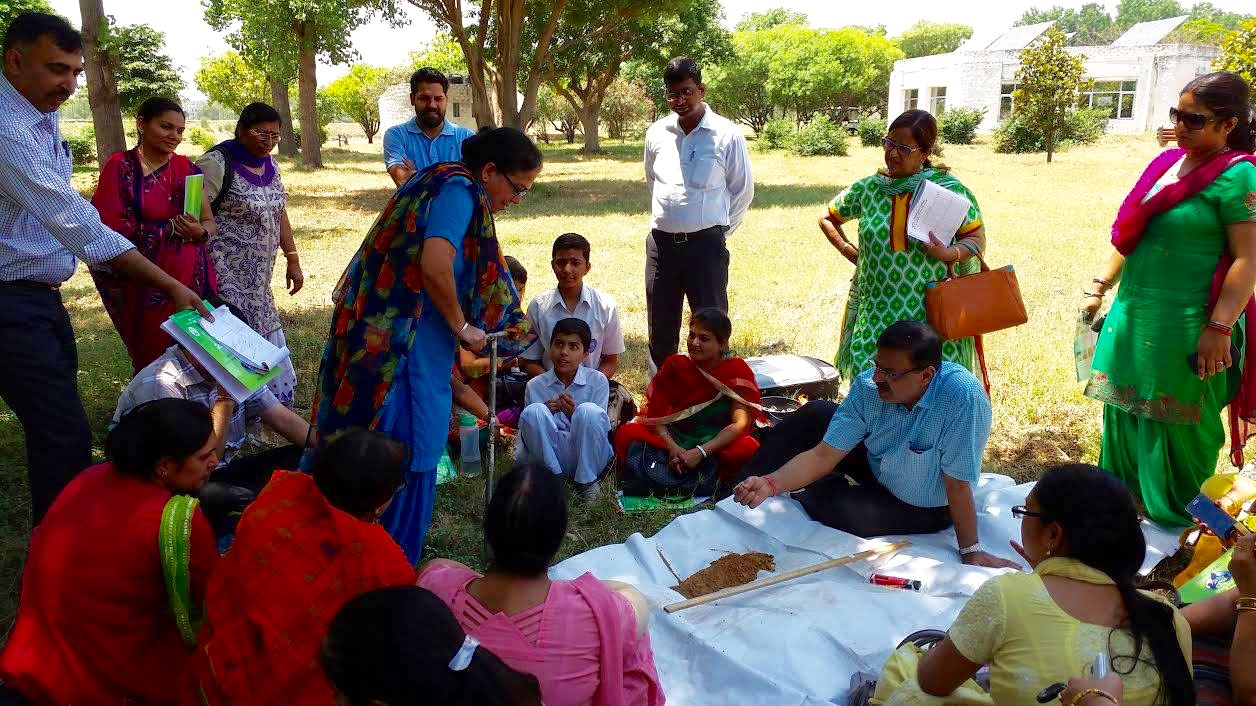RE: Atmosphere Student Research Project Guidance - Fellowships - Atmosphere
GLOBE Distinguished Educator Fellowship - 2016
 We are no longer accepting applications for the 2016 Fellowship.
We are no longer accepting applications for the 2016 Fellowship.
The GLOBE Program and the GLOBE Implementation Office (GIO) are excited to announce our second GLOBE Distinguished Educator Fellowship. This fellowship harnesses the GLOBE community expertise in the development of new educational resources that can benefit the whole community.
For this year, teachers, either formal or informal, will work with scientists in the development of GLOBE educational materials. The scientist will support the educator in ensuring scientific accuracy. As part of the application process, we invite teachers to team with scientists on a particular project. There will be three fellowships awarded this year: one for the United States and two for GLOBE countries other than the US.
An informational webinar about the 2016 GLOBE Distinguished Educator Fellowship was held on 12 November 2015. Presenters at the webinar included Mr. John Moore, the 2015 Distinguished Educator Fellow, and Dr. Julie Malmberg, GLOBE Implementation Office Education and Outreach. If you were unable to attend, the webinar was archived and the recording is available here.
For this fellowship, we are asking that teacher propose an educational activity for the GLOBE community. Possible options include, but are not limited to:
- Updating an existing learning activity making use of the GLOBE database and updated visualization tool.
- Compiling a suite of activities consisting of existing GLOBE protocols and learning activities to create a curriculum bundle; relevant materials not currently curated into GLOBE may be used to supplement in the creation of the bundle. For example, see the teaching boxes created by GLOBE Partner UCAR Center for Science Education
- Creating a new learning activity related to a current Earth-observing satellite(s) or an upcoming Earth-observing satellite launch
- Creating a new learning activity related to a GLOBE investigation area/sphere
See scoring criteria for more information about what is required in the application.
Scientists can be involved in creating the proposal, but it is not a necessary requirement. However, the scientist that the teacher will work with HAS to be identified in the proposal. In addition, the teacher and scientist do not have to be in the same location or from the same country as much of the work can be completed electronically.
Application Materials
To apply for this fellowship, we ask that you email your application materials to help@globe.gov. A complete application needs to include all of the following information:
- Name, contact information, job title, organization, and location of the teacher.
- Name, contact information, job title, organization, and location of the supporting scientist.
- Description of the proposed activity including grade level(s), investigation area or topic, and other pertinent information.
- Description of a need for the product. This can be a short literature review or letters of support from educators who would use the product. (The review should not be longer than one page. Up to three letters of support can be submitted. The supporting letters are not included in the recommended page length for the application.)
- Description of how teachers can integrate this educational activity into the classroom.
- Plan for addressing local and/or national standards. (For US applicants, this should include Common Core and/or Next Generation Science Standards.)
- Timeline for completion (this should be a six-week period) and should include time for review by GIO before the activity is due in its final form on 15 August 2016.
- If multiple languages are spoken, include all languages the teacher or scientist could translate the activity into.
Recommended length of proposal is four pages with 1.5 spacing and 12-point font.
The proposed educational activity should be completed and ready for NASA review by 15 August 2016.
Each fellowship recipient (teacher and scientist) will receive a stipend of $650 USD upon completion of the fellowship.
Eligibility:
- Teacher is an active GLOBE teacher (note: both formal and informal educators are welcome to apply)
- Teacher has entered data into the GLOBE database in the past year
- Applicant has an identified scientist
- Scientist is in the GLOBE International Scientist Network (Note: If scientist is not in the GISN, he or she can apply before the due date)
Note: If you are interested in applying for the fellowship, but do not have a scientist to support you, please share your interest on the GLOBE Distinguished Educator Fellowship discussion board (scroll to the bottom of the page). Include your name, job title, organization, contact information, and GLOBE investigation area of interest.
Scoring Criteria:
Applicants will be scored based upon the following criteria:
- Activity includes using and/or entering GLOBE data
- Activity includes using the GLOBE visualization tool
- Quality of proposal
- Feasibility of proposal
- Demonstrated need for activity
- Activity fills a gap in GLOBE's current learning activities
- Timeline
Important Dates:
- Informational Webinar 12 November 2015 at 1:00 p.m. MT (20:00 UTC). Archived Recording
- Applications are due by 5 January 2016
- Fellowship recipients will be announced by 29 January 2016
- Fellowship begins no later than 1 July 2016
- Completed activities must be submitted to GIO by 15 August 2016











